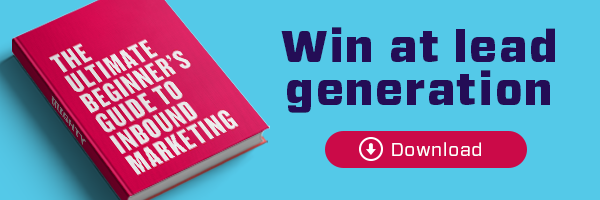Your CRM database is your most valuable asset, but it is only as powerful as you make it. Maintaining it and following up with leads manually is time-consuming and can yield inneffective results (i.e. spending time on unqualified leads). The good news is that there are marketing automation tools out there that take the headache out of mantainting your database and take it to the next level.
Marketing automation tools give your inbound strategy an advantage over those who aren't using automation. In a study done by the Lenskold Group, 60% of survey respondents who utilize marketing automation say it has increased the quality of leads that are given to sales. Of those leads, 23% have a shorter sales cycle.
One of the goals of marketing automation is to make the process of qualifying leads more efficient and effective. Marketing automation does this by giving you the ability to create workflows that will nurture and qualify your leads through pre-set, follow up interactions. Based on a lead's behavior, they can be automatically moved through the appropriate lead-nurturing workflow or be marked as an unqualified lead.
What is a workflow?
A workflow is a series of automated actions you can program to trigger based on a person's behavior or demographic information. Workflows offer several advantages including:
- They save time by automating regular maintenance tasks.
- They better qualify your leads by automatically moving them through the appropriate channels based on their action.
- They are a more effective way to market to leads.
- They weed out leads who are not a good fit.
- They provide data about what follow-ups are working and what is not working.
When is it time to use workflows?
- You're generating leads but ignoring the ones not ready to buy from you.
- Your sales team is unhappy with the quality of leads your marketing team is sending them.
- You are sending the same email to your entire CRM database.
- You are not segmenting the information you've gathered about your leads.
- Your messaging is not tailored based on your leads needs.
- You're following up with each lead manually.
How should you use workflows?
Utilize workflows to personalize your approach to each group of leads. Start by segmenting your leads. A good inbound marketing automation platform, like Hubspot, will allow you to group your leads together by a one or more contact properties (actions they've taken, demographic information, stage in the buyer's journey, lead status, etc.). Take what you know about your leads and use that to your advantage when nurturing them into a customer.

Once you've segmented your database, it's time to set up workflows. Create workflows that will provide your leads with relevant, helpful information that will aid in their buyer's journey. Remember, your goal is to be helpful and to help your lead reach their goals. Don't discuss your products or services until they are in the decision phase of the buyer's journey.

It's important to monitor the effectiveness of each workflow. If you see high unsubscribe rates, it's likely that you aren't sending information that is relevant to their needs or phase in their buyer's journey. If a lead is not engaging in your efforts, moving them to different workflow may be helpful to re-engage them. Do they prefer more or fewer communications? Does their lead status need to be adjusted? Do they need to be removed from your workflows all together?
Marketing automation tools save you and your sales team valuable time and make your lead nurturing efforts immensely more effective. Salesforce and Hubspot are two popular and easy to use platforms. Tie that in with a little inbound marketing and your team is well on it's way to success!


